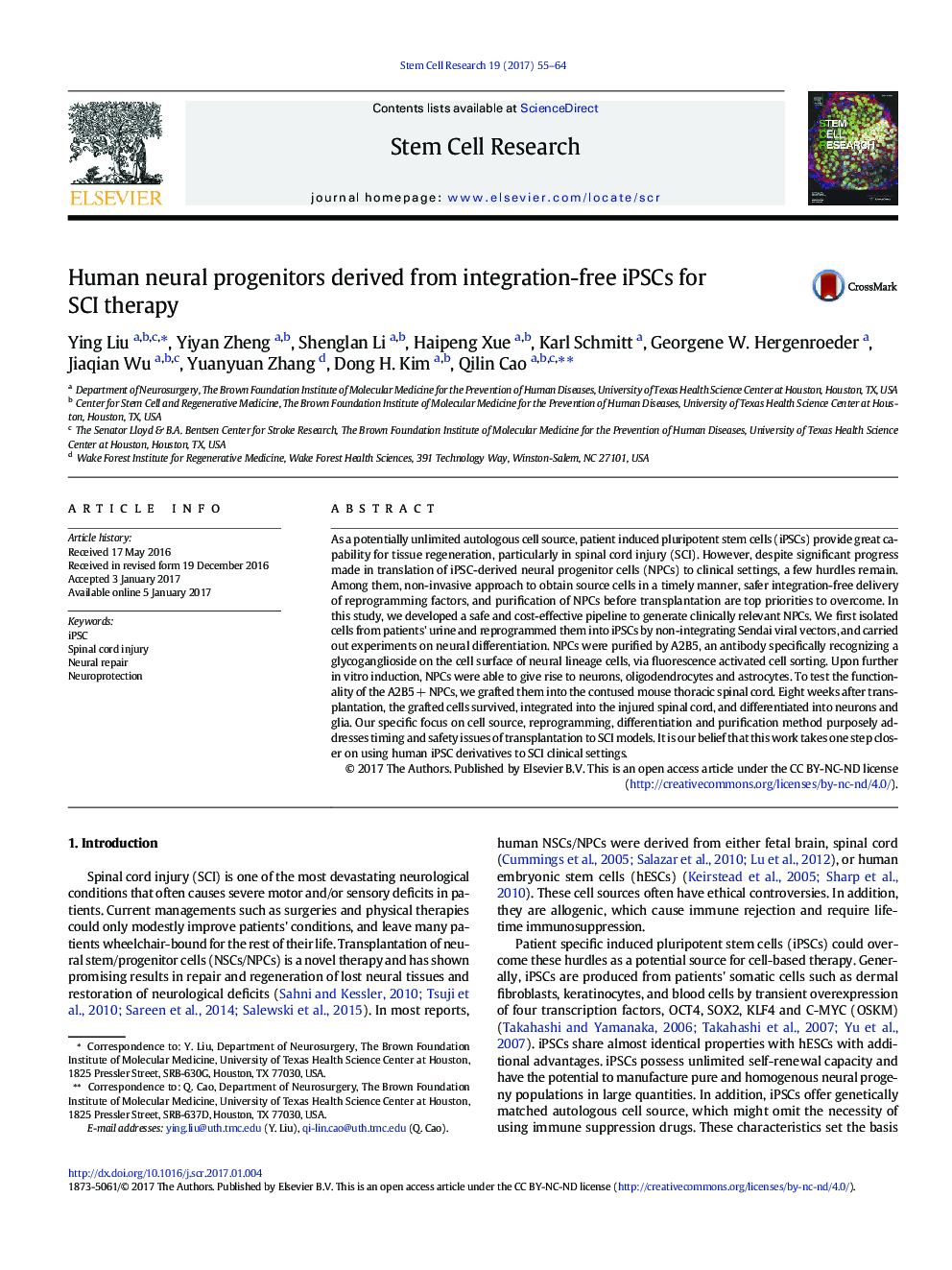| Article ID | Journal | Published Year | Pages | File Type |
|---|---|---|---|---|
| 5522727 | Stem Cell Research | 2017 | 10 Pages |
â¢Patient urine cells can be reprogrammed into integration-free induced pluripotent stem cells (iPSCs)â¢iPSCs can be further induced to neural progenitor cells (NPCs) which can be purified by FACS using the A2B5 antibodyâ¢NPCs are able to survive, integrate and differentiate in the injured spinal cord without tumor formationâ¢NPCs generated from our pipeline have the potential to become useful autologous cell source for treating spinal cord injuryâ¢The fact that the A2B5 antibody sorting in NPCs has been established allows for a fast translation to the clinics
As a potentially unlimited autologous cell source, patient induced pluripotent stem cells (iPSCs) provide great capability for tissue regeneration, particularly in spinal cord injury (SCI). However, despite significant progress made in translation of iPSC-derived neural progenitor cells (NPCs) to clinical settings, a few hurdles remain. Among them, non-invasive approach to obtain source cells in a timely manner, safer integration-free delivery of reprogramming factors, and purification of NPCs before transplantation are top priorities to overcome. In this study, we developed a safe and cost-effective pipeline to generate clinically relevant NPCs. We first isolated cells from patients' urine and reprogrammed them into iPSCs by non-integrating Sendai viral vectors, and carried out experiments on neural differentiation. NPCs were purified by A2B5, an antibody specifically recognizing a glycoganglioside on the cell surface of neural lineage cells, via fluorescence activated cell sorting. Upon further in vitro induction, NPCs were able to give rise to neurons, oligodendrocytes and astrocytes. To test the functionality of the A2B5Â + NPCs, we grafted them into the contused mouse thoracic spinal cord. Eight weeks after transplantation, the grafted cells survived, integrated into the injured spinal cord, and differentiated into neurons and glia. Our specific focus on cell source, reprogramming, differentiation and purification method purposely addresses timing and safety issues of transplantation to SCI models. It is our belief that this work takes one step closer on using human iPSC derivatives to SCI clinical settings.
Graphical abstractDownload high-res image (108KB)Download full-size image
